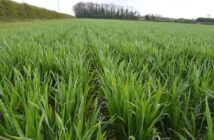It’s that time of year again, when AHDB launch the latest cereals Recommended List data. The 2017/2018 list sees 29 new varieties added in total, with some new considerations for growers in the west.
Wynnstay’s Seed Sales Manager Richard Torr, provides insight on what varieties growers should be looking out for in the New Year.
“The latest Recommended List has seen several introductions, with 11 new varieties being added to the winter wheat section, some of which offer strong options to growers in the west,” says Mr Torr.
A new addition that Mr Torr says growers should be aware of is KWS Kerrin, a hard Group 4 wheat.
“KWS Kerrin holds the title as the highest yielding variety on the list. The impressive yield advantage is in combination with stiff straw and good resistance to orange wheat blossom midge, mildew, yellow rust, and brown rust. It’s also the top yielding second wheat and is definitely a variety I would advise growers to consider if they are looking for a hard feed wheat,” he adds.
There have also been several new introductions which are set to challenge the dominant, regular variety choice, JB Diego.
Recently, breeders seemed unable to improve yields without it being at the expense of disease resistance and maturity, but Mr Torr says the latest additions offer some solutions.
“The new list includes varieties such as LG Sundance. It’s a hard group 4, and has the highest rating for resistance to Septoria Tritici, at 7.3, whilst still providing a high yield. This is a breakthrough in crop genetics, and provides new options for growers in battling the disease without compromising yield.”
Other new additions include Shabras and Dunston, and the list still has last year’s popular varieties Graham and Siskin, which are all offering much improved Septoria Tritici resistance, while generally being early maturing.
“With the high yielding, disease resistance characteristics of these varieties on the list, it will be interesting to see how they perform against the farmer favourites,” he adds
“This year’s list looks to include interesting new options for growers, whether it be to reduce disease risk or improve yield, however, I do have one small qualm with the 2017/2018 list. With all the new additions, and few being removed, growers have to view the wheat list over several pages. While it’s great to have so much varietal choice, it makes directly comparing characteristics more challenging, and provides a massive selection for growers to choose from.
“Is it the case that varieties on the whole are improving, or is the list becoming less elite? I’ll leave farmers to decide.
“However, aesthetics aside, I am impressed with the new varieties which have been introduced and the competition they pose for old favourites, and I look forward to seeing which ones sell, and how they perform in harvest 2017.”




